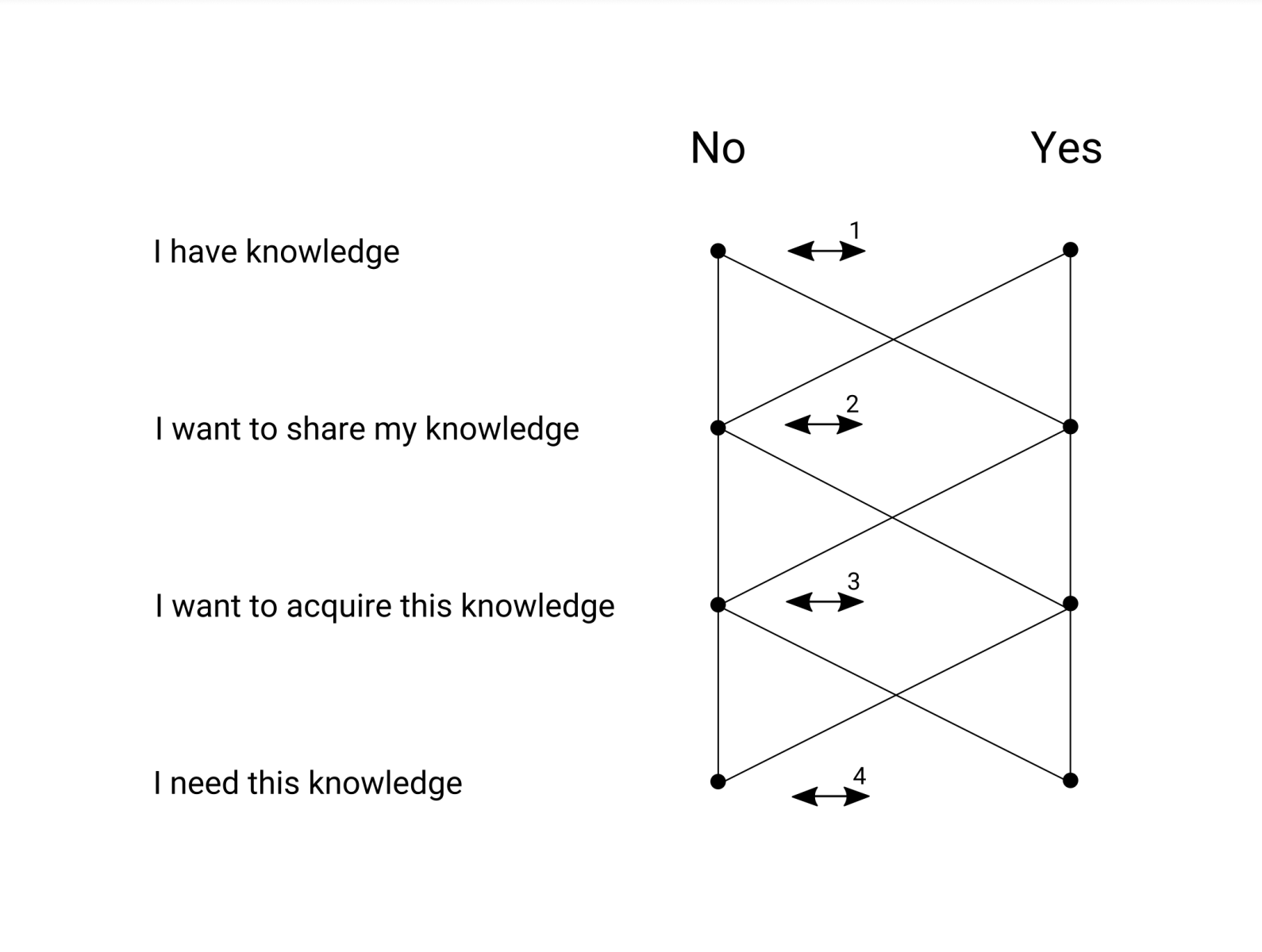The Problem of Knowledge Sharing
The rules of knowledge sharing are similar to those of a marketplace, where both sides must be willing to buy or sell at the same time. For knowledge sharing to occur, someone who has knowledge is required - let’s call them a knowledge donor. On the other side, we need someone who wants to acquire this knowledge - a knowledge recipient, if you will. Of course, we can imagine a situation in which someone learns by themselves, through experience. I don't want to cover this aspect of knowledge acquisition, and while it is equally important, I will ignore it in this article.
The presence of a donor and a recipient is a prerequisite for knowledge sharing, but it’s not the only one. For most people, it is obvious that the donor must have knowledge to share and must be willing to share it. On the other hand, the recipient must be in need of this specific knowledge and must be willing to acquire it from the donor.
This can be illustrated as follows:

In a business context, things are obviously more complex, as there are no clear boundaries between the individual roles and the learner is also a teacher. Interactions between employees introduce additional fluctuations, too. You could say that the diagram above is pretty basic, and I could illustrate my idea using the example of writing and reading of articles or holding conferences for teams. Believe me, it would only further cloud the simple concept of knowledge sharing. Besides, my simple diagram encompasses all these complex situations.
For example, it shows that an experienced employee might well be willing to share their knowledge, but if an inexperienced intern believes they have all the answers and refuses to learn from an old fart, there will be no exchange (the donor has knowledge, the donor wants to share it, the recipient needs this knowledge, but the recipient does not want to acquire it).
Another example: an experienced employee wants to learn and takes part in a conference to fulfill this ambition, yet the level of the knowledge shared at the event is too low or the subject area inadequate (the donor - the speaker - has knowledge, the donor wants to share it, the recipient wants to acquire this knowledge, but the recipient doesn’t need it).
For knowledge exchange to be possible and effective, we need to get as close to a “yes” as possible for each factor. What’s worth noting is that it’s not a binary system - each factor refers to a certain spectrum and it is up to the organization, leaders, supervisors and employees to influence their position within it.
Sometimes employees might not want to share their knowledge or might not want to acquire it. For example, employees may think that they don’t have time for knowledge sharing or that it’s not expected from them. (Actions needed to improve levels 2 and 3.) Donors may have skills to share, but no knowledge on how to pass them on. (Actions needed to improve level 2.)
On the other hand, donors might wrongly believe that they have all the answers, while in reality they still have a lot to learn from other employees. (Actions needed to improve level 3.)
I’d like to point out that even a utopian exchange between employees has its limits, as knowledge sharing in itself restricts level 4 - eventually, everyone will learn from others everything there was to learn. In such a case, it is necessary to act on improving level 1. The goal of this article is not to offer ready-to-implement solutions, but to offer a different angle. Considering which level it’d be best to work on could really pay off. I believe that the perspective I’ve presented here might help you find tailored solutions more effectively than a ready-made fix.
Your homework - decide which level needs action the most in your organization and… act!
